Why are nitrogen fertilizers needed for cucumbers in a greenhouse, what are they and how to apply them correctly
cucumbers is one of the most popular vegetables in Russia. Summer salads are prepared from them, they are pickled and salted for the winter. The plant is adapted to warm, humid climates and prefers to grow in fertilized soil.
This article discusses the main advantages of nitrogen fertilizers, which are used by both ordinary summer residents and the largest agricultural holdings.
Why do we need nitrogen fertilizers for cucumbers?
The effect of nitrogen fertilizers on cucumbers is difficult to overestimate. Timely introduction of fertilizing promotes stable growth and development of plants.
The role of nitrogen in their cultivation
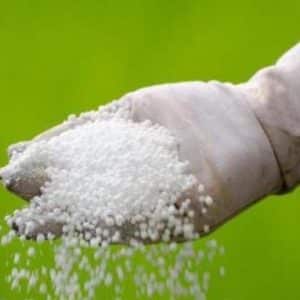
Nitrogen is the main element involved in plant metabolism.
Almost all basic physiological processes in plant and animal organisms occur with the participation of nitrogen molecules.
Why is its deficiency dangerous?
It is known that plants obtain nutrients from the soil. If there is not enough nitrogen in the soil, plants will inevitably suffer from its deficiency.
Signs of nitrogen deficiency: leaves and stems are thin, leaves are yellowing and weakened, there are no ovaries, low yield.
How to determine if cucumbers lack nitrogen
Signs of nitrogen deficiency in cucumbers:
- pale young shoots;
- small and yellowing leaves;
- thin stems;
- weak bushiness and flowering part;
- absence of lateral processes.
Terms of fertilizing
If there is a lack of nitrogen, it is necessary to apply nitrogen fertilizers to the soil every 10–14 days. Fertilizing is stopped 20–25 days before harvest.
Types of nitrogen fertilizers
Based on their origin, nitrogen fertilizers are divided into organic (organic) and mineral.
Organic
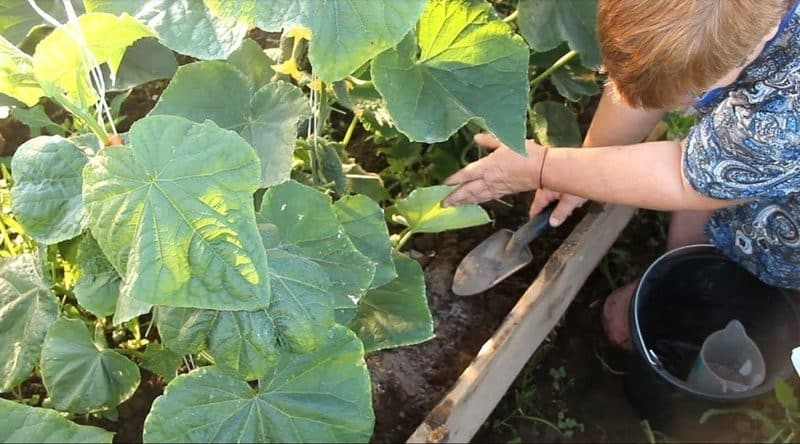
Organic fertilizers include silt, peat, bird droppings, manure, rotted plant remains, green manure.
Silt is used to improve the quality characteristics of sandy soil. Before feeding cucumbers, the sludge must be spread in a thin layer and dried for three days. Next, it is poured around the stems in a thin layer no higher than 1.5 cm.
Peat is added to the soil directly during the preparation of the substrate for planting cucumber seedlings.
Bird droppings are used as fertilizer for watering plants. It is not recommended to use it in its pure form. Dilute in water in proportions of 1:5 and leave for several days, preferably in a barrel. The container is left in the greenhouse to maintain humidity. Before watering, dilute with water in proportions 1:9.
Manure is used as bush feeding. Fertilizer cannot be used in its pure form either. For feeding, rotted manure is often used, diluted with water in a ratio of 1:3.
Rotten remains of plants are used to add bushes. Mix with soil and sprinkle near the stems of the plant.
Green manure is added when digging the soil. They enrich the soil well with nitrogen compounds and accumulate moisture in the soil.
Mineral fertilizers
Nitrogen mineral fertilizers are characterized by a higher nitrogen content.
Urea
Urea (in other sources - urea) is considered the most effective nitrogen fertilizer in the process of growing vegetable and horticultural crops.
Urea has excellent solubility in water. It consists of 47% nitrogen available to plant organisms.
Ammonium sulfate
Ammonium sulfate is a mineral fertilizer containing nitrogen and sulfur. The composition is used not only in agro-industrial activities and horticulture, but also in the food and textile industries. Widespread use is associated with the low price and effectiveness of its use.
Ammonium sulfate is rich in useful microelements that lengthen the fruiting period. Use exclusively in dissolved form. The mineral provides the root system with useful components and does not react chemically with the soil.
Ammonium nitrate
Ammonium nitrate is small granules in the shape of a sphere, white or pink. It contains about 35% nitrogen and about 16% sulfur. Ammonium nitrate is used only for root feeding.
Attention! Use in the form of a solution can lead to leaf burns and plant death. Cucumbers should be fertilized with ammonium nitrate with extreme caution, as nitrates may accumulate in the fruits.
Calcium nitrate
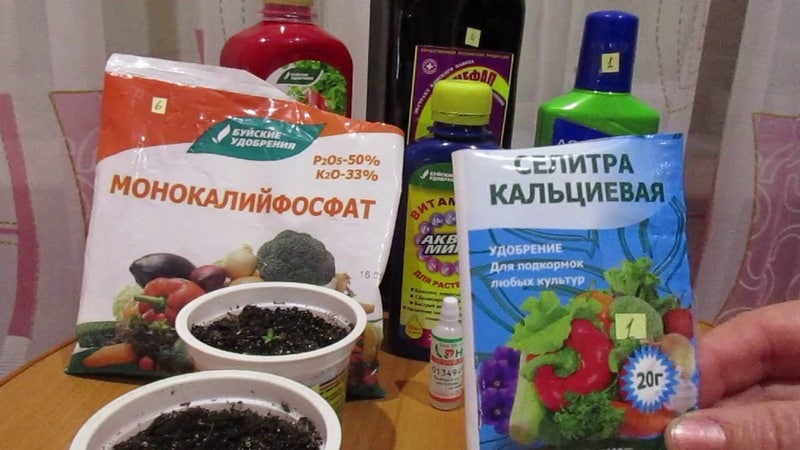
Calcium nitrate contains calcium (21%) and nitrogen in nitrate form (14–16%). It is otherwise called calcium nitrate. It appears as pure white crystals or granules.
Calcium nitrate is highly soluble. The convenience of its use is associated with the long-term preservation of beneficial properties. To extend shelf life, the fertilizer is kept in sealed packaging.
Sodium nitrate
Sodium nitrate consists of sodium and nitrogen. It is used during the growing season of cucumbers. Apply to the soil in the autumn, preferably in saline soil.It is strictly forbidden to use it in greenhouse conditions - this will lead to the death of the plants.
How to apply fertilizers correctly
Any fertilizer is used strictly according to the instructions. This is the only way minerals will help the plants and not harm the soil.
Urea is added in the spring during the digging process to a depth of 20 cm. Approximately 5–10 g of the substance per 1 m2.
One of the most effective methods of feeding is spraying cucumbers with urea. If you apply urea to the leaf, the fertilizer is absorbed much faster. When the first signs of nitrogen deficiency appear, this method is used.
Cucumber lashes should be treated with a solution diluted with water.
Composition for foliar feeding:
- 5 g urea;
- 10 liters of water.
In order not to burn the vegetative mass, the bushes are sprayed in a volume of 5 tbsp. l. for 10 liters of water. Cucumber leaves are processed in cloudy weather early in the morning.
Ammonium sulfate is introduced into the soil regularly 2-3 times a season. The first feeding is carried out 20 days after the appearance of the first shoots. Then apply to the soil every 2 weeks. Ammonium sulfate is added after watering or precipitation. 10–14 days before harvest, fertilizing is stopped.
Ammonium nitrate is most often used to fertilize a site in late autumn.. When using it to feed bushes, be careful. Under no circumstances should you spray the leaves of cucumbers - this will cause burns and death of the plants. Typically, ammonium nitrate is used in root feeding and applied to the soil to a depth of 10 cm. Most often, this is done while digging up the site, until the plants are transplanted into the ground.
Sometimes ammonium nitrate is also used for watering cucumbers. This way the soil is enriched with nitrogen without harming the stems and leaves.Such fertilizing should be carried out carefully, especially after the start of fruiting and in the autumn.
Calcium nitrate is applied immediately before sowing cucumbers. This will allow the seeds to germinate quickly. During the germination period, the element is simply necessary for plants. Fertilizer can then be applied throughout the growing season.
Foliar feeding of cucumbers with calcium nitrate is carried out every 10 days. The first time the mineral is applied immediately after three or more leaves appear on the plants. Stop fertilizing cucumbers after the fruiting period begins.
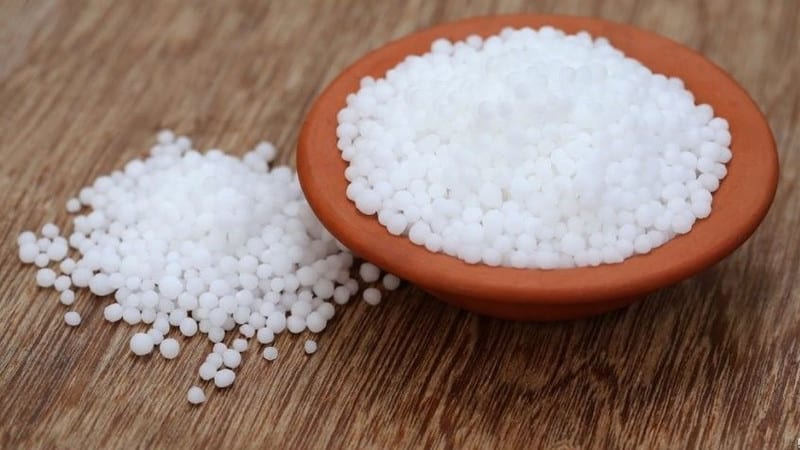
To prepare the fertilizer, mix:
- 5 liters of water;
- 10 g calcium nitrate.
Calcium nitrate is stirred until completely dissolved and immediately begin spraying the cucumbers. This kind of feeding will prevent the appearance of rot on the roots. The use of fertilizer provides excellent protection against slugs and ticks.
Fertilizing
Often nitrogen fertilizers are introduced into the soil in early spring or autumn. The deadline for using fertilizers during the fruiting period is mid-July. This is mainly due to the effect of nitrogen on the growth of leaves and the entire above-ground part.
During the flowering period
When growing in greenhouses, it is recommended to use nitrogen fertilizers before the cucumbers bloom; this has a beneficial effect on the yield. To enhance the effect, fertilizer is applied evenly.
Nitrogen is especially necessary when the ovaries form and the growth of cucumber vines begins. During this period, cucumbers also need phosphorus, which is mixed with superphosphate.
The composition is prepared as follows:
- 10 liters of water;
- 15 g urea;
- 15 g double superphosphate.
The first treatment is carried out 10–12 days after planting.Then fertilizing is repeated every 10 days until new ovaries appear on the bush. After this, it is not recommended to use fertilizer.
During the fruiting period
It is best to fertilize the crop during the active growing season before the cucumbers begin to bear fruit. How to feed if they are already bearing fruit? In this case, it is necessary to maintain the same proportions as during the development of green mass. However, you should not overuse fertilizers. Excess nitrogen will lead to the accumulation of harmful substances.
Features of feeding cucumbers with nitrogen
Cucumber seedlings should be fertilized with extreme caution. At this time, there is a risk of overfeeding the plants, which will subsequently lead to their death.
In a greenhouse (greenhouse)
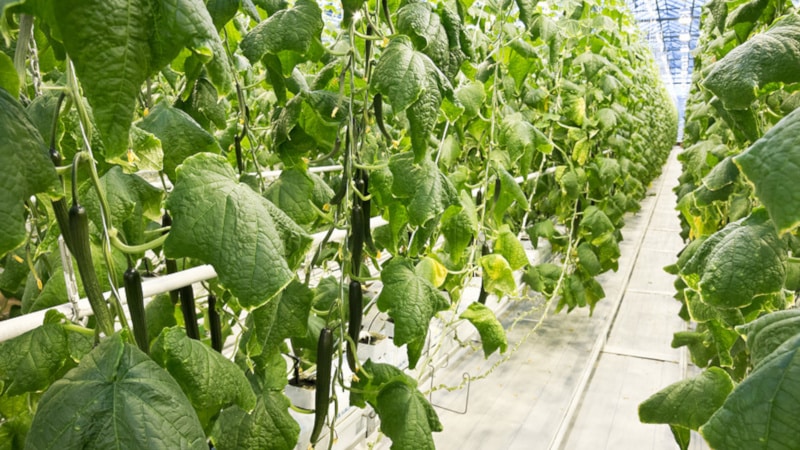
Nitrogen fertilizers for cucumbers in a greenhouse are used in pre-sowing soil preparation. Urea is applied with phosphorus and potassium fertilizers two weeks before planting seedlings or sowing seeds.
The solution is prepared as follows:
- 15 g urea;
- 30 g superphosphate;
- 20 g of potassium sulfate.
The resulting mixture is used per 1 m2. After strengthening the roots of the seedlings, the first root feeding with urea is carried out. Then fertilizers are applied every 1-2 weeks until fruit formation begins. It is especially important to feed cucumbers with urea during flowering and ovary formation.
In the open ground
Cucumber loves water, so in open ground it is necessary to water the plant often. Watering is carried out daily in the early morning or evening, before sunset.
Important! If there is a lack of moisture, the fruits will be bitter. Watering should be especially intense during the formation of cucumbers.
Often manure or bird droppings diluted with water with the addition of ash are used for fertilizer. The solution is prepared in the following proportions:
- The container is filled 1/3 with manure or bird droppings and filled with water.
- The entire composition is mixed.
- The resulting solution is diluted with water in a ratio of 1:2, and bird droppings in a ratio of 1:3.
Another effective mineral nitrogen fertilizer for cucumbers:
- 10 liters of water;
- 10 g ammonium nitrate;
- 10 g superphosphate;
- 10 g potassium salt.
Root fertilizing with urea begins on the tenth day after germination of cucumbers. Feed every 10–14 days until fruiting.
Tips and tricks
Cucumbers are among the most productive crops. In order for the bushes to grow well and produce a large harvest, favorable conditions should be created. This moisture- and heat-loving culture prefers sunny places, protected from drafts and winds. With a partial reduction in exposure to sunlight, the fruiting period is extended.
Cucumbers prefer nutritious soils rich in fertilizers, so the planting area for the crop is prepared in the fall.
Results
Signs of nitrogen deficiency in cucumbers must be identified in time and measures taken to saturate the soil with useful components. The above-described feeding methods will help achieve high yields and prevent the development plant diseases.